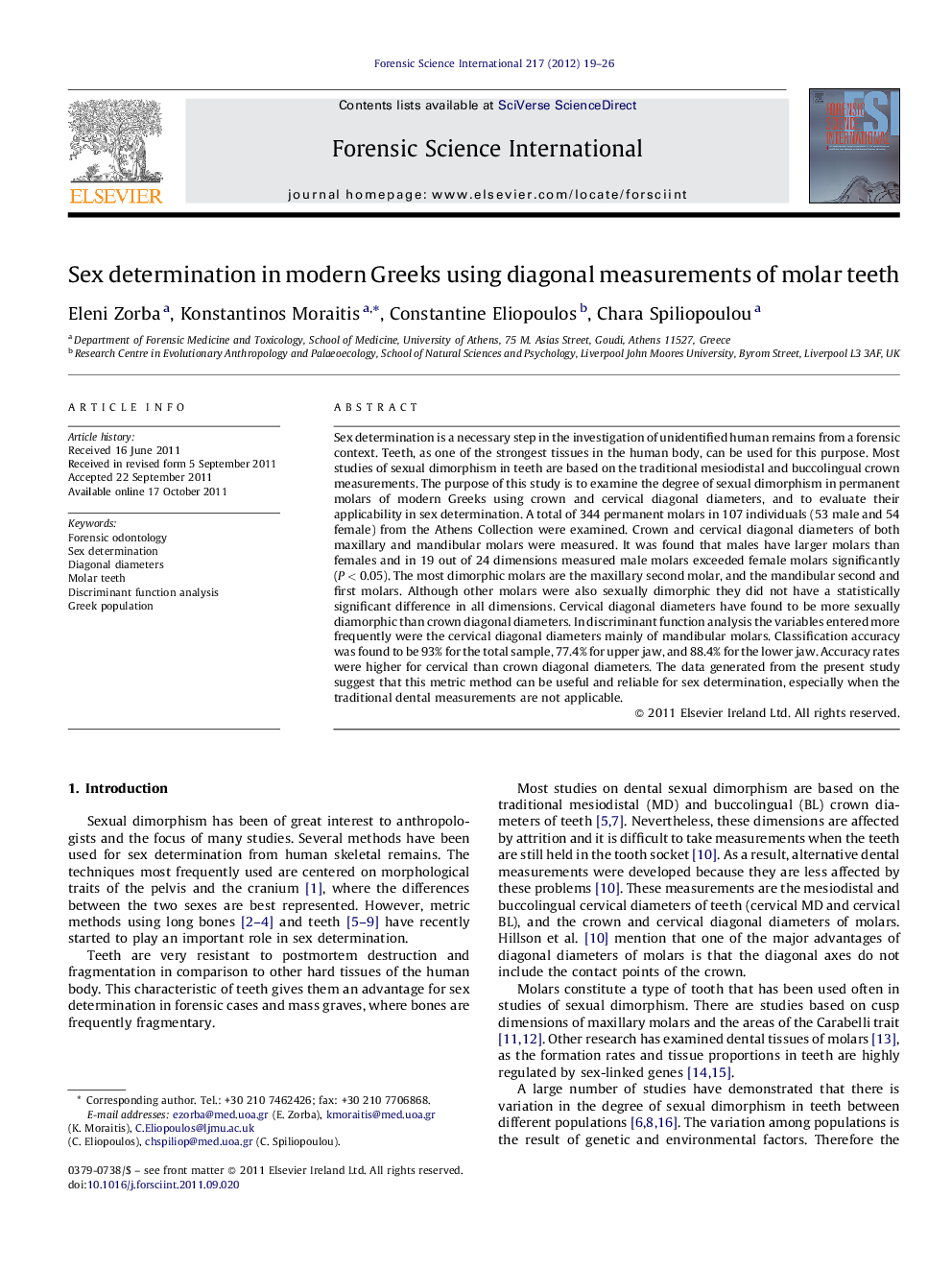| Article ID | Journal | Published Year | Pages | File Type |
|---|---|---|---|---|
| 96239 | Forensic Science International | 2012 | 8 Pages |
Sex determination is a necessary step in the investigation of unidentified human remains from a forensic context. Teeth, as one of the strongest tissues in the human body, can be used for this purpose. Most studies of sexual dimorphism in teeth are based on the traditional mesiodistal and buccolingual crown measurements. The purpose of this study is to examine the degree of sexual dimorphism in permanent molars of modern Greeks using crown and cervical diagonal diameters, and to evaluate their applicability in sex determination. A total of 344 permanent molars in 107 individuals (53 male and 54 female) from the Athens Collection were examined. Crown and cervical diagonal diameters of both maxillary and mandibular molars were measured. It was found that males have larger molars than females and in 19 out of 24 dimensions measured male molars exceeded female molars significantly (P < 0.05). The most dimorphic molars are the maxillary second molar, and the mandibular second and first molars. Although other molars were also sexually dimorphic they did not have a statistically significant difference in all dimensions. Cervical diagonal diameters have found to be more sexually diamorphic than crown diagonal diameters. In discriminant function analysis the variables entered more frequently were the cervical diagonal diameters mainly of mandibular molars. Classification accuracy was found to be 93% for the total sample, 77.4% for upper jaw, and 88.4% for the lower jaw. Accuracy rates were higher for cervical than crown diagonal diameters. The data generated from the present study suggest that this metric method can be useful and reliable for sex determination, especially when the traditional dental measurements are not applicable.
